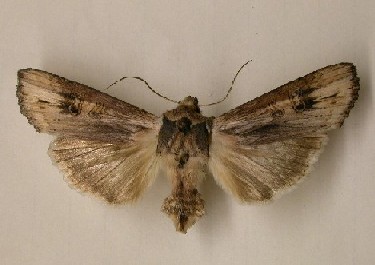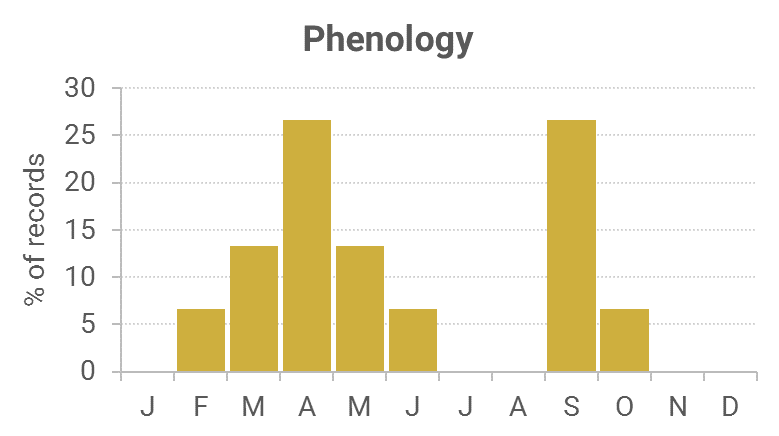Identification
Very similar to Red Sword-grass but trailing half of the forewing is straw-buff and not contrasting with the leading edge. Lacks orange or red tints.
Recording Method.
Attracted to light in small numbers, also comes to sugar and flowers.
Life cycle
One autumn generation, reappearing in the spring. Overwinters as an adult. Larvae are present from May to July, with pupation in a cocoon close to the ground.
Larval foodplants
Thistles, docks, Groundsel and other low species.
Habitat
Chiefly in the uplands – Moorland, open woodland and rough pasture.
History
Lennon (1863) had found it in the Crichton Institution Garden, Dumfries. Gordon (1913) had found it common at sugar and ivy blossom at Corsemalzie (VC74). Earliest date was 24th September 1906 with the latest 8th May 1911.
William Evans received specimens from Mowat, the Killantringan lighthouse keeper during 1914-15 to aid his insect migration studies.
Archibald Russell (1944) listed it as occurring near Gatehouse of Fleet (VC73) during the years 1942-43. Sir Arthur Duncan had found it at Tynron (VC72) in March 1944, October 1951 and April 1952, with another record in Kirkmahoe parish in February 1952, all four specimens at National Museums Scotland.
Cunningham (1950) stated that at Mabie Forest in the whole of the autumn of 1949 he only saw three specimens and none at all in 1950. He also stated that he had never seen the Sword-grass in spring after hibernation.
During early May 1974 one was trapped at Irvine House Lodge, Auchenrivock, Dumfriesshire. Another spring record was in late March 1997 in Cally Woods (VC73).




